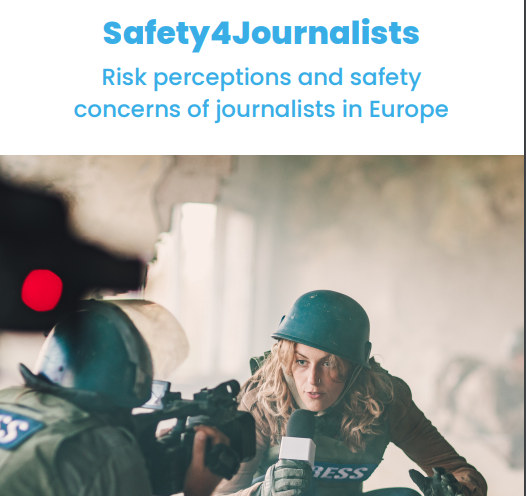
A report published by the European Federation of Journalists (EFJ) about the safety of journalists across Europe reveals a serious lack of training and awareness, as journalists face increasing threats and intimidation in the course of their work. Authored by media expert Marc Gruber, the report analyses the current situation of the health and safety of journalists across Europe and explores the responsibilities of management, journalists’ unions and associations in tackling the issue.
The safety of journalists is a priority for many journalists’ unions in Europe, who have witnessed the increasing physical and psychological risks faced by media workers in recent years. In 2021, the Media Freedom Rapid Response (MFRR) documented a total of 626 media freedom violations against journalists and media outlets across the EU, candidate countries, and the United Kingdom.
Carried out in Spring 2022, the survey found that:
- 40% of respondents stated they faced at least one form of threat or incident against them in the past six months;
- Around half of the attacks were experienced either by themselves or their colleagues;
- “Softer” threats, such as hate speech, verbal abuse and insults, are the most reported incidents but are often overlooked. Women are more frequently the targets of hate speech than their male counterparts; Nearly three-quarters of the women interviewed were affected by hate speech in the past six months.
- Hacking is an issue for over one-third of journalists and defamation is the most common legal threat reported.
According to the report, the extent of psychological incidents and their impact on the work and morale of journalists is underestimated. Many journalists said they are left to deal with their own problems and suffer from isolation. “It took eight months after an attack for my editor to simply ask me ‘how are you’ “, said one journalist.
In addition to these alarming results, the survey also shows a lack of safety training:
- Over one third of the journalists do not know if their workplace or employer has developed any policy on safety and security;
- Only 40% of the respondents declared that risks are assessed prior to dangerous assignments and missions;
- Only a minority of journalists surveyed received training in each category identified for this study (hostile environment first aid, general first aid, digital security, and health and safety at work);
- Freelance journalists in particular have to self-fund to attend training sessions which, in most cases, are outdated.
- The survey respondents stated they would like to see implemented by their employers’ preventive measures of safety, including relevant and updated safety training sessions, safety policies and reporting procedures in case of incidents.
However, the attitude is different depending on where the journalist is based. In Eastern Europe, for example, journalists do not trust their employers nor the public authorities when reporting safety incidents. Several journalists considered that there should be an independent body or person who can be directly contacted to report incidents.
Journalists’ unions and associations are mostly expected to provide expertise, counselling and legal support. However, legal support requires specific skills and financial resources that most organisations cannot afford.
A key recommendation which emerged from this survey was to implement internal regulations supporting journalists’ safety, such as administering physical training on safety or initiating dialogue with journalists and editors or media managers. Another recommendation was to set up collective agreements and that this should be the role of the unions/associations as well as national or regional politicians who could raise the issue at the political level.
This survey was carried out in the framework of the “Safety4journalists” project. The results are based on 290 individual responses to a series of 55 questions available in four European languages (English, French, German and Croatian). The results are being used by the EFJ to better understand the health and safety needs of journalists and their perception of threats. The findings will also be disseminated to stakeholders who play a role in developing better policies, risk assessment tools and training for journalists. It will also eventually contribute to safety training courses run by the EFJ and its partner organisations.
(Source: EFJ)